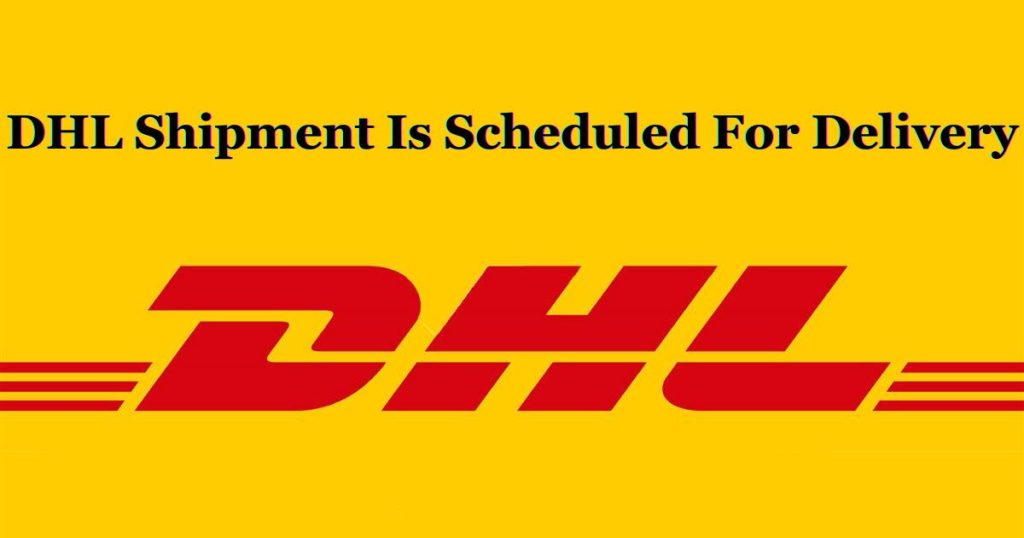“DHL Missent” refers to a situation in the shipping and logistics industry where a package is mistakenly sent to the wrong destination or location during transit. This can occur due to various reasons such as labeling errors, sorting mistakes, or technical glitches.
When a package is marked as “DHL Missent”, it indicates that the shipment has deviated from its intended route. But delays and inconveniences have been encountered. More details about the DHL Missent is shared underneath.

What is DHL Missent?
DHL Missent refers to a situation where a package or shipment is mistakenly sent to the wrong location or destination during the shipping process. It occurs when a package is routed incorrectly, and leads it to a different city, state, or even country than the intended delivery address.
This error can happen due to various reasons, such as incorrect labeling, scanning errors, or misrouting at a sorting facility. When a package is marked as “DHL Missent,” it indicates that the shipment has deviated from its intended route.
This can cause delays in delivery, as the package needs to be rerouted back to the correct destination. It will add extra transit time. To resolve a DHL Missent situation, DHL’s logistics professionals typically intervene promptly.
They work to re-route the package back to the correct destination, and ensure that it reaches the recipient as soon as possible. Customers are often encouraged to contact DHL’s customer service if they notice their package has been misspent. Timely communication can aid in expediting the correction process.
While DHL Missent occurrences are relatively rare due to advanced tracking systems, errors can still happen. You need to know the importance of accurate labeling and vigilant monitoring in the shipping process to prevent such situations and ensure the smooth delivery of parcels.
What are the common reasons for “DHL Missent”?
One of the most common reasons for DHL missent packages is incorrect or illegible labeling. If the sender provides inaccurate address information, the package may be misrouted to the wrong destination during the initial stages of shipping. More common reasons are pointed underneath.
Sorting Errors
Misrouting can occur at sorting facilities, where packages are scanned and sorted based on their destination. Human error or technical glitches in the automated systems can lead to packages being directed to the wrong conveyor belts. It can cause them to end up in the wrong shipment route.
Data Entry Mistakes
Errors made during data entry, either by the sender or DHL staff, can result in missent packages. Inaccurate information inputted into the system, such as postal codes or street addresses. It can lead to the package being sent to the wrong location.
Transshipment Errors
During transshipment, where packages are transferred from one mode of transport to another, misplacement can occur. If not handled carefully, then packages might be loaded onto the wrong truck, ship, or plane. It can divert them from their intended route.
Human Oversight
Occasionally, human oversight or miscommunication among staff members can lead to missent packages. Confusion or misunderstandings at various stages of the shipping process may result in the package being sent to the wrong destination.
How does “DHL Missent” affect package delivery?
“DHL Missent” significantly impacts package delivery by causing delays and potential inconveniences for both the sender and recipient. When a package is misrouted, it travels off its intended path. It will lead to extended transit times and delayed deliveries.
These delays can disrupt planned schedules, especially for time-sensitive shipments, business deliveries, or gifts for special occasions. For the recipient, the delay caused by DHL missent packages can lead to frustration and disappointment.
Customers may have to adjust their plans, wait longer than anticipated, or deal with uncertainties about the package’s whereabouts. From a business perspective, delayed deliveries due to misrouting can harm a company’s reputation.
Customers may perceive the business as unreliable, impacting customer trust and loyalty. Besides, businesses may face increased customer service inquiries, necessitating additional resources to address customer concerns about the delayed shipments.
To mitigate these effects, DHL typically employs expedited re-routing processes to correct missent packages promptly. However, the overall impact on package delivery includes not only the delay itself but also the potential strain on customer relations and the need for additional resources to rectify the situation. So, minimizing instances of DHL missent packages is crucial to ensuring the smooth flow of deliveries.
What is the difference between “DHL Missent” and “DHL Delayed”?
“DHL Missent” and “DHL Delayed” are distinct situations in the shipping and logistics process, each indicating different issues and stages of a package’s journey. “DHL Missent” refers to a scenario where a package is mistakenly sent to the wrong location or destination during the sorting or transit process. This can happen due to labeling errors, sorting mistakes, or miscommunication.
A package is travelled off its intended route. It leads to delays and potential disruptions in the delivery schedule. Rectifying a missent package often involves rerouting it back to the correct destination, which can extend the delivery time significantly.
“DHL Delayed” indicates a situation where a package experiences a delay in its expected delivery time. Delays can occur due to various reasons, such as high shipping volumes, weather conditions, customs clearance issues, or transportation challenges.
Unlike missent packages, delayed shipments might be in the correct route but experience setbacks during their journey, and lead to extended transit times. DHL Delayed packages are still en route to the correct destination but are taking longer than anticipated to arrive.
What are the steps to take when your package is marked as “DHL Missent”?
When your package is marked as “DHL Missent,” it is essential to take proactive steps to expedite its correct delivery. Knowing the right steps will be very helpful for you. Let’s slide down and have a look at the main details.
Contact DHL Customer Service
Reach out to DHL customer service immediately. Provide them with your tracking number and detailed information about the package. Their representatives can initiate an investigation and guide you through the resolution process.
Verify Your Address
Double-check the shipping address you provided. Ensure it’s accurate and complete. Mistakes in the address could be a reason for misrouting.
Be Patient but Persistent
While DHL resolves the issue, be patient. Misrouted packages can take time to be rerouted correctly. However, remain persistent in following up with DHL for updates on the resolution progress.
Communicate with the Sender
If you’re the recipient, inform the sender about the situation. They might have additional influence or resources to assist in the resolution process.
Request Expedited Delivery (If Urgent)
If the package contains time-sensitive items, request expedited delivery once the misrouting issue is resolved. DHL may offer faster shipping options to compensate for the delay.
Document Communication
Keep records of all communication with DHL, including dates, names of representatives, and details discussed. This documentation can be valuable if the situation escalates or if you need to file a complaint.
Taking these steps ensures you stay informed and involved in the process. It increases the likelihood of a swift resolution and the correct delivery of your package.
What are the legal implications of “DHL Missent”?
The legal implications of “DHL Missent” primarily revolve around consumer rights, contractual obligations, and the responsibilities of the shipping company. Consumers have the right to receive the products they paid for within a reasonable timeframe and in proper condition. If a misrouted package significantly delays this process, then consumers may have legal grounds to seek compensation or a refund for the inconvenience caused.
If a business or individual has entered into a contractual agreement with DHL, and the misrouting of a package results in financial losses or damages. The affected party may have legal grounds to seek reimbursement for these losses. Contractual terms often include delivery timelines, and any deviation due to misrouting might constitute a breach of contract.
DHL bears the responsibility for the correct and timely delivery of packages. If a misrouted package leads to financial losses for the sender or recipient, DHL might be held liable. Legal action can be pursued if DHL fails to rectify the situation promptly.
Consumer protection laws in many countries mandate that consumers have the right to receive products within a reasonable time. If a misrouted package violates these laws, then legal action can be pursued, including filing complaints with relevant consumer protection agencies.
How can you avoid “DHL Missent” for your shipment?
Avoiding “DHL Missent” for your shipment requires careful attention to detail and adherence to best practices throughout the shipping process. Ensure that the shipping label is clear, accurate, and affixed securely to the package. Double-check recipient address, postal code, and contact number, to prevent misroutings caused by labeling errors.
If the label is handwritten, make sure it’s legible. Illegible addresses are prone to misinterpretation, and lead to misdirection. Package your items securely to prevent damage during handling. Use sturdy boxes, proper cushioning, and seal the package well.
A securely packaged item is less likely to suffer labeling damage that might cause misrouting. Clearly communicate any special handling instructions to DHL when arranging the shipment. Provide specific delivery instructions and minimize the chances of misdirection.
Conclusion
In the realm of global logistics, “DHL Missent” underscores the significance of precise handling and accurate data management. It signifies a temporary deviation from the intended shipping route, and emphasizes the complexities involved in large-scale transportation operations.
Timely intervention, thorough tracking, and effective communication with the shipping provider are essential in rectifying these situations. By ensuring meticulous attention to detail and employing advanced tracking technologies, businesses and consumers alike can minimize the risks associated with misrouted packages. It will ensure the smooth flow of shipments and maintaining customer satisfaction.




